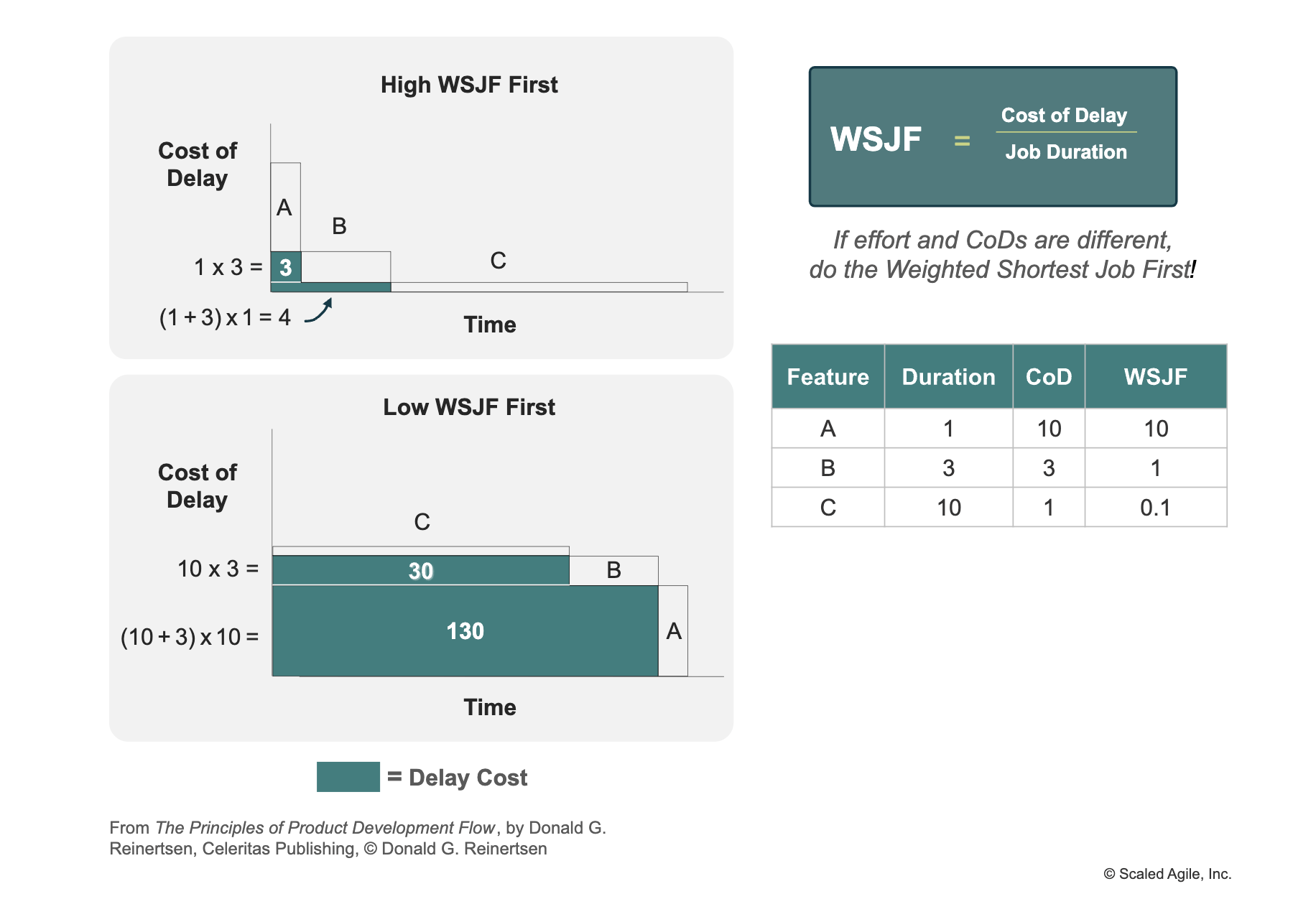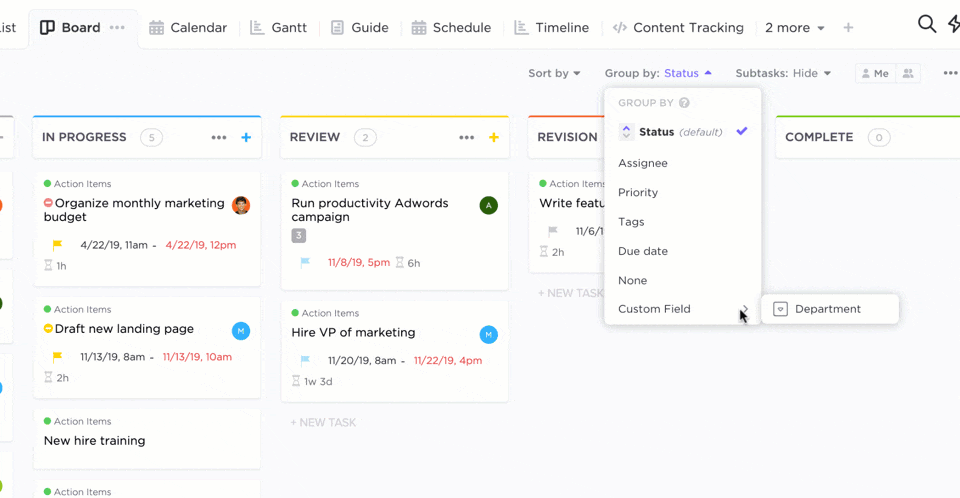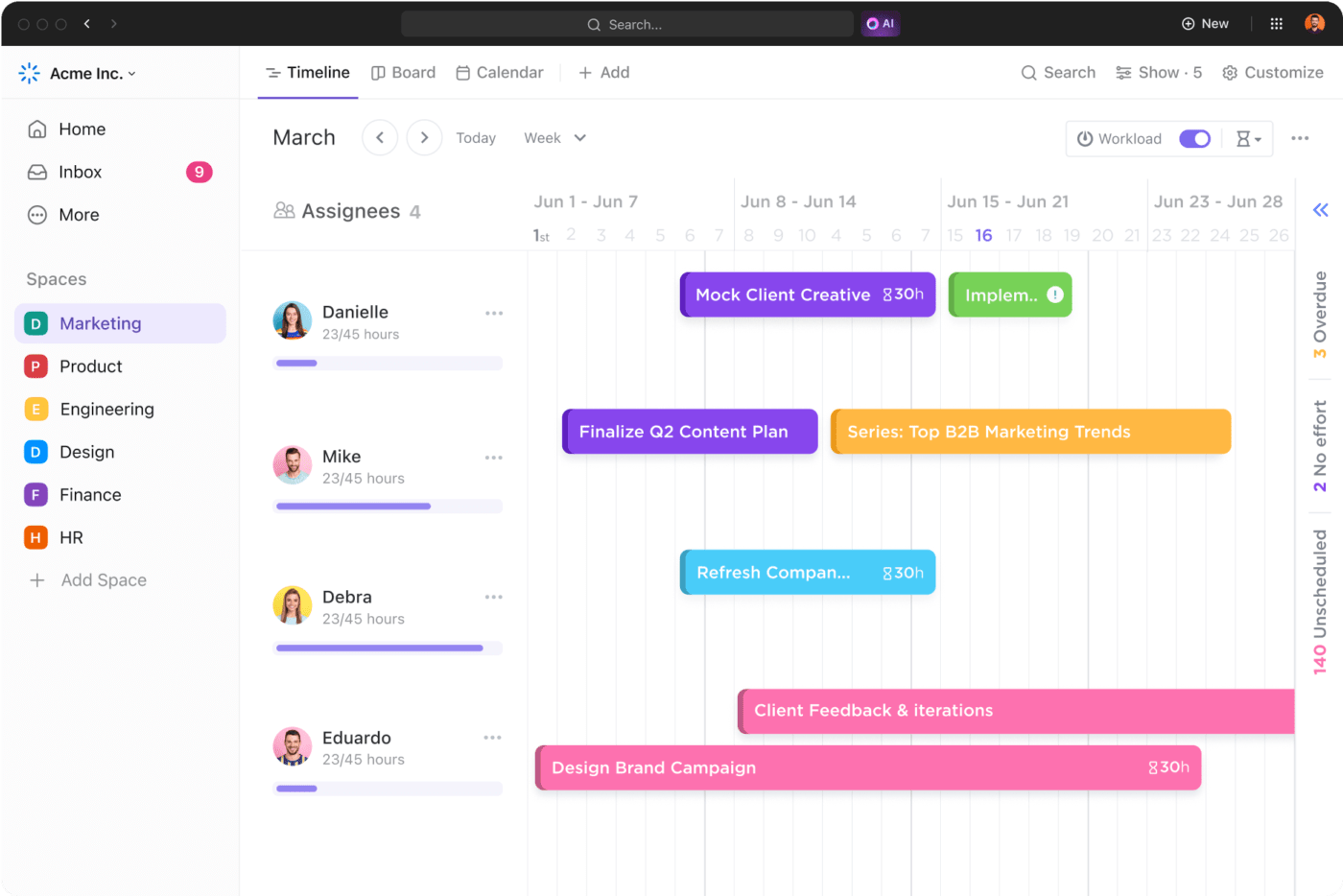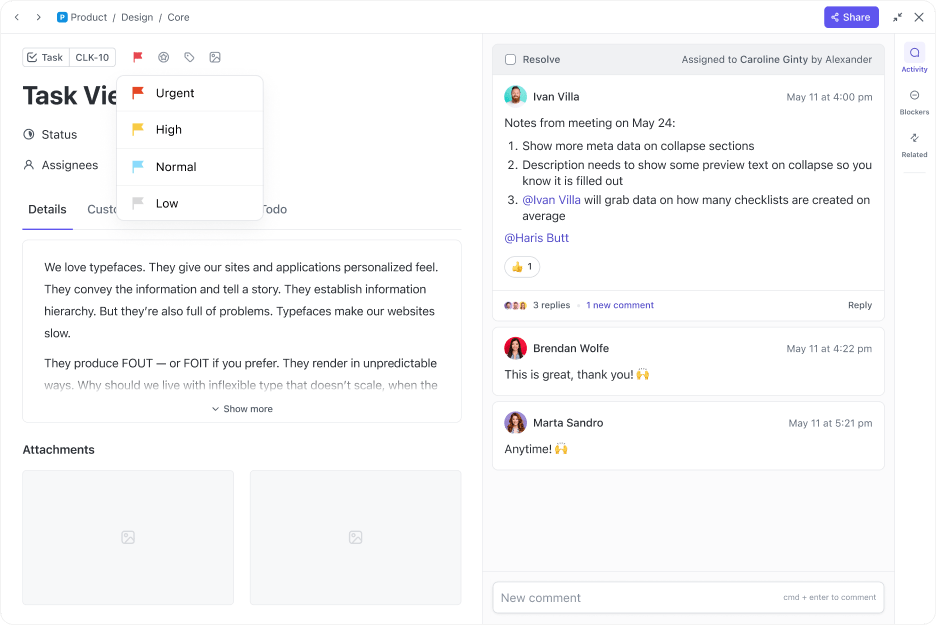How to Use Weighted Shortest Job First (WSJF) for Prioritization

Sorry, there were no results found for “”
Sorry, there were no results found for “”
Sorry, there were no results found for “”

Ever get stuck deciding whether to work on a big, flashy initiative that promises huge returns or a smaller, less exciting task that’s quicker to complete?
Every project manager faces this dilemma, and it often feels like there’s no clear answer.
That’s where weighted shortest job first (WSJF) comes in. It offers a data-driven approach to help you make smarter prioritization decisions.
So buckle up as we break down how WSJF can drive your prioritization process in the right direction!
Weighted shortest job first (WSJF) is a prioritization model used in Agile, particularly within the scaled Agile framework (SAFe). It helps teams decide which tasks or features to tackle first.
This agile prioritization technique helps teams focus on initiatives that deliver the most value in the shortest time.
📌When everything feels urgent, it’s hard to know what to tackle first. ClickUp’s Prioritization Matrix Template helps your team organize tasks based on priority tiers, ranking high-impact work first, so you can deliver value faster, with less guesswork.
WSJF considers key factors like user and business value, time sensitivity, and risk reduction, making it easier to align efforts with business goals. WSJF ensures you’re working on tasks with the highest impact, boosting efficiency and reducing delays.
⭐️ Fun Fact: The ‘Shortest Job First’ approach was first utilized in the 1970s, when resources were scarce and expensive. The goal was to make the best use of this in the most inexpensive way.
Before we understand how to use WSJF in Agile and SAFe, let’s understand what a SAFe Environment is.
The Scaled Agile Framework (SAFe) was designed for organizations running complex, multi-team Agile projects, often across departments or entire enterprises. Unlike smaller Agile setups, SAFe provides a structured approach to managing large projects, enabling teams to work collaboratively while keeping goals aligned across multiple levels—like portfolio, program, and team.
Within SAFe, Weighted Shortest Job First (WSJF) prioritizes work based on economic impact. It allows teams to identify features that provide the most benefit in the shortest time, maximizing the return on effort.
Applying WSJF at various levels—portfolio, program, and solution train—ensures alignment, collaboration, and focus on the highest-value work, directly supporting Scrum pillars like collaboration and transparency.
While WSJF can be applied in any Agile product management framework, it’s especially useful in SAFe due to its scale and complexity. In high-risk or high-value projects, WSJF helps teams make data-driven prioritization decisions. This is key in large projects where stakeholder input, collaboration, and clear prioritization are essential.
Some common uses of WSJF in Agile include:
Important note: WSJF is resource-intensive, making it less ideal for minor tasks like bug fixes. It’s best suited for high-impact work that drives business outcomes.
WSJF is a powerful prioritization framework that helps teams make informed, data-driven decisions. Here’s how you can benefit from WSJF for Agile projects:
Understanding the components of WSJF helps you prioritize tasks more effectively. The formula breakdown shows how each factor helps identify high-value tasks.
Let’s explore the key elements of the WSJF formula and how they work together to optimize task prioritization.
1. Cost of Delay (CoD): CoD captures the impact of delaying a task.
It’s calculated by combining three elements:
Together, these elements give a clear picture of how crucial a task is to complete soon.
2. Job size: This is the estimated time or effort needed to complete the task. Smaller tasks with a high CoD score are typically prioritized since they deliver value faster
The figure below demonstrates how prioritizing jobs using Reinertsen’s WSJF can significantly impact economic outcomes.
The shaded areas represent the total CoD for each scenario. Jobs with the highest WSJF prioritize the most valuable work, leading to better financial results. As shown, selecting the next best job, rather than the next easiest, can have a substantial financial impact. (© Scaled Agile, Inc.)
The WSJF score is calculated by dividing the Cost of Delay by the Job Size. Tasks with higher WSJF scores are tackled first, ensuring that teams focus on high-impact, quick-to-complete work that maximizes value.
💡 Pro Tip: The level of effort should also be considered when evaluating CoD. It can influence the overall impact of delay.
The WSJF prioritization model allows you to weigh various factors, so high-value tasks with low time requirements naturally float to the top. Here’s a step-by-step guide to calculating WSJF using ClickUp.
To calculate CoD, rate each factor—value, time criticality, and risk reduction—on a scale (usually a Fibonacci scale). Sum these scores to get a single CoD value.
For example, if a task scores 8 for value, 5 for time criticality, and 7 for risk reduction, the CoD would be 20.
You can set up ClickUp Custom Fields to input and calculate these values for each task. This makes it easy to track and update CoD as project priorities evolve.
Next, estimate the effort or time of each task. This is often measured by ‘job duration’ or ‘size’ and is key to determining WSJF.
The ClickUp Time Tracking feature is a great tool to calculate hours worked. You can monitor how long similar tasks take, use historical data, or make estimations based on team feedback.

Keep in mind that using a consistent scale is essential for fair prioritization. For example, an easy task may get a duration score of two, while a more complex task may get a score of 20.
📮ClickUp Insight: While 40% of employees spend less than an hour weekly on invisible tasks at work, a shocking 15% are losing 5+ hours a week, equivalent to 2.5 days a month!
This seemingly insignificant but invisible time sink could be slowly eating away at your teams productivity. ⏱️
Put ClickUp’s Time Tracking and AI assistant to work and find out precisely where those unseen hours are disappearing. Pinpoint inefficiencies, let AI automate repetitive tasks, and win back critical time!
Now that you have both CoD and Job duration, divide the CoD by the job duration to get the WSJF score:
WSJF = Cost of Delay / Job duration
For example, if a task has a CoD of 20 and a job duration of five, the WSJF score would be 4. Higher scores indicate higher priority tasks.
📌 Example
Consider two initiatives:
In this case, Initiative A has a higher WSJF score, which should be prioritized above Initiative B.
To make this calculation easier, you can use ClickUp Formula Fields to automatically divide the CoD by the Job Duration for each task. This automation ensures that your prioritization stays up-to-date without manual calculations and human errors.

All you need to do is:
What’s more, you can try the ClickUp Prioritization Matrix Template to evaluate and prioritize tasks based on their impact.
Building a successful product roadmap requires careful prioritization, often involving tough decisions on what to tackle first.
WSJF ranks items in your product backlog based on impact and effort, ensuring high-impact tasks rise to the top and get the attention they deserve.
The ClickUp Product Management Software streamlines WSJF prioritization with customizable scoring, visual roadmaps, and feedback tools, helping you weigh the business value, time criticality, and job size.
With simplified WSJF scoring, ClickUp aligns your team’s priorities, promoting faster, data-driven decisions that maximize value. Let’s explore how.

Before diving into calculations, align your WSJF framework and overarching business goals within an Agile Scrum environment.
Think about what your organization values most right now—whether it’s increasing revenue, improving customer satisfaction, or reducing operational costs. This clarity ensures that WSJF prioritization directly supports the company’s broader objectives, making your roadmap actionable and meaningful.
Identify the top business goals and make sure everyone on the product team understands how they impact prioritization.
Use the ClickUp Product Roadmap Template to structure your roadmap around these goals, ensuring alignment from the start.
Your stakeholders—whether from marketing, sales, or customer success—have valuable insights that can refine your WSJF prioritization. Collaborate with them to understand which features or improvements will impact your customers or the business the most.
Host a workshop or use ClickUp Assign Comments to discuss and engage stakeholders and decision-makers to assess each feature’s business value, time sensitivity, and reduced risk benefits. This approach can capture feedback directly on your roadmap items for transparency.
📌Example: When stakeholders provide input, use Assign Comments to @mention the relevant team members or yourself. Once the feedback is addressed or a decision is made, resolve the comment or reassign it for further clarification.
With all comments centralized in one location, stakeholders can easily refine WSJF prioritization based on the latest input without confusion.

To calculate WSJF, refer to the previous section’s guidance on scoring factors.
Assign each task a score for business value, time criticality, and risk reduction (or opportunity enablement) using a consistent scale, like Fibonacci. Add these to find the Cost of Delay, then estimate the Job Size based on the task’s effort or time requirements.
WSJF Formula: WSJF Score = Cost of Delay/Job Size
📌 Example: Let’s consider the product roadmap of a productivity app:
| Feature | Business value | Time criticality | Risk reduction | CoD (sum) | Job size | WSJF score |
| Task reminders | 8 | 7 | 5 | 20 | 3 | 6.67 |
| Automated reporting | 9 | 5 | 6 | 20 | 4 | 5.00 |
| Team collaboration tools | 10 | 8 | 7 | 25 | 5 | 5.00 |
| Goal setting dashboard | 7 | 6 | 4 | 17 | 2 | 8.50 |
You can use this approach for other products, services, or project tasks.
Once you have WSJF scores for each item, it’s time to rank them. Place the highest-scoring items at the top of your roadmap for maximum impact.
Keep in mind that prioritization is an ongoing process, so you may need to adjust rankings as new information comes in. WSJF scoring helps your team prioritize features that enhance user experience and team collaboration.
ClickUp offers several ways to visualize your WSJF-prioritized roadmap, making it easy for everyone—from team members to executives—to stay informed.
For instance, ClickUp Board View lets you visualize tasks in customizable columns based on their priority. Drag and drop items to adjust the order, making it easy to communicate changing priorities on a Kanban Board.

Use ClickUp Timeline View to map out tasks over time, making it easy to see where high-priority items fit into your overall roadmap. This view helps you manage dependencies, track progress, and meet key milestones.

The priorities you set today may change tomorrow, especially in dynamic markets.
Regularly review your WSJF calculations and rankings to make sure they reflect current conditions, business goals, and customer needs. This step helps keep your roadmap responsive and relevant.
The ClickUp Prioritization Matrix Template offers a clear way to organize tasks using WSJF for agile roadmap planning. It’s a 3×3 matrix with Impact and Effort as axes, where tasks score low, medium, or high. Color-coded cells make prioritization easy:
Add Tasks as sticky notes to ClickUp Whiteboards, assess their impact and effort, and drag them into the appropriate cell. This flexible view lets you link Tasks and Docs and add visuals, giving you a creative, interactive workspace for WSJF prioritization.
💡 Pro Tip: The WSJF approach also enhances collaboration between different departments. Marketing teams can adjust their campaigns based on the prioritized features determined by development teams, which further leads to better resource allocation and timing.
Introducing WSJF to your teams can drive better prioritization and alignment across the organization.
In the Agile framework, WSJF helps prioritize features and capabilities at various levels, ensuring that resources go to the most valuable tasks, aligning product development with business goals.
Getting your team on board with WSJF (Weighted Shortest Job First) can streamline prioritization and create a shared understanding of what drives value.
Here are some practical strategies to introduce WSJF effectively:


Here are some common challenges in WSJF and how to overcome them
| Challenge | Solution |
| Difficulty in estimating value | Break down large features into smaller components. Use data, customer insights, and stakeholder feedback to make more informed decisions |
| Inconsistent scoring | Standardize scoring methods and criteria across teams. Hold workshops to align on evaluating value, risk, and other key factors |
| Overemphasis on speed | Balance time with value. Prioritize both short-term speed and long-term strategic impact, ensuring alignment with overall business goals |
| Lack of alignment with business objectives | Regularly review WSJF prioritization to ensure alignment with evolving goals and strategy. Involve stakeholders for alignment using scrum workflow |
| Unclear dependencies | Use tools like ClickUp to map dependencies early. Visualize tasks and interdependencies to avoid blockers and ensure proper prioritization |
| Overcomplicating the process | Simplify the WSJF process by focusing on key factors (value, time, risk). Keep the model straightforward to facilitate faster decision-making |
| Resistance to change in prioritization | Encourage flexibility and continuous improvement. Communicate the benefits of WSJF to stakeholders, emphasizing a focus on high-impact tasks |
Did You Know? In his book, The Principles of Product Development Flow, Don Reinertsen highlights that roughly 85% of product managers don’t know the answer to the question, “What would it cost if we delayed this thing a few months?” Companies that put extra effort into quantifying ‘the total expected value with respect to time’ and calculate ‘Cost of Delay’ make better decisions
Now we know, it’s essential to understand the role product managers play in task and feature priortization. Let’s tackle that together.
Product managers play a vital role in implementing WSJF within teams by driving prioritization, communication, and alignment.
As a product manager, you’re the anchor that keeps your team focused on what truly counts. When it comes to prioritizing tasks and features, look at each one’s business value, urgency, and risk. This way, you’re channeling resources into the projects that drive the most impact.
Beyond prioritizing, you’re the go-to person for keeping the team organized and energized. It would help if you also tried to motivate everyone to stay aligned with strategic goals, making sure WSJF integrates smoothly into the everyday flow.
Communication is also crucial—keeping cross-functional teams updated on product status, release timelines, and roadmap changes ensures everyone’s in sync with any shifts.
Collaborating with engineers and QA keeps WSJF decisions practical and grounded in technical reality. And don’t skip the market research—understanding customer needs and trends helps you keep priorities spot-on.
At the end of the day, you’re shaping a vision everyone can rally around, with a clear, aligned roadmap that drives real success.
Phew! We have covered a lot of ground, but before that, let’s also see how WSJF compares to other popular frameworks.
WSJF stands out for its focus on maximizing value and minimizing delays. However, it’s important to compare it to other popular prioritization tools to understand its advantages.
WSJF shines in environments where time is critical, and business value must be maximized. It allows teams to prioritize work that has the highest value-to-time ratio, making it particularly suited for fast-paced product development.
WSJF is an effective method for prioritizing tasks and features based on their value and required effort.
Whether you’re tackling a product roadmap or making strategic decisions, WSJF helps ensure you’re maximizing value, minimizing delays, and optimizing resources.
ClickUp makes integrating WSJF seamless.
With powerful templates, customizable fields for calculating the Cost of Delay and Job Duration, and collaborative features like Docs and Assign Comments, you can optimize the entire process.
Sign up to ClickUp today!
© 2025 ClickUp